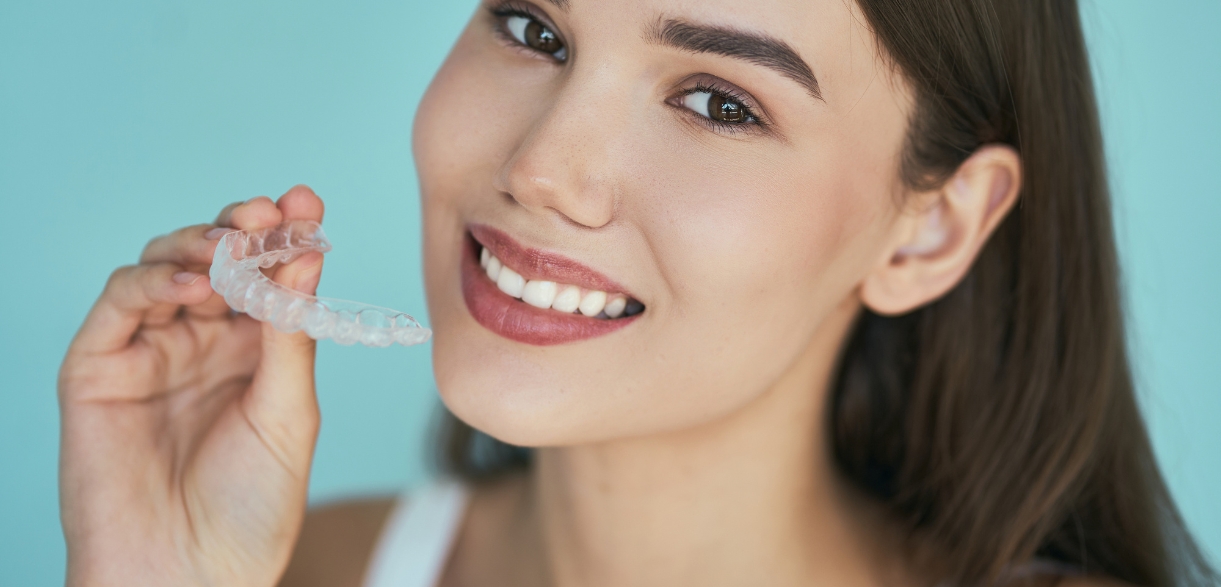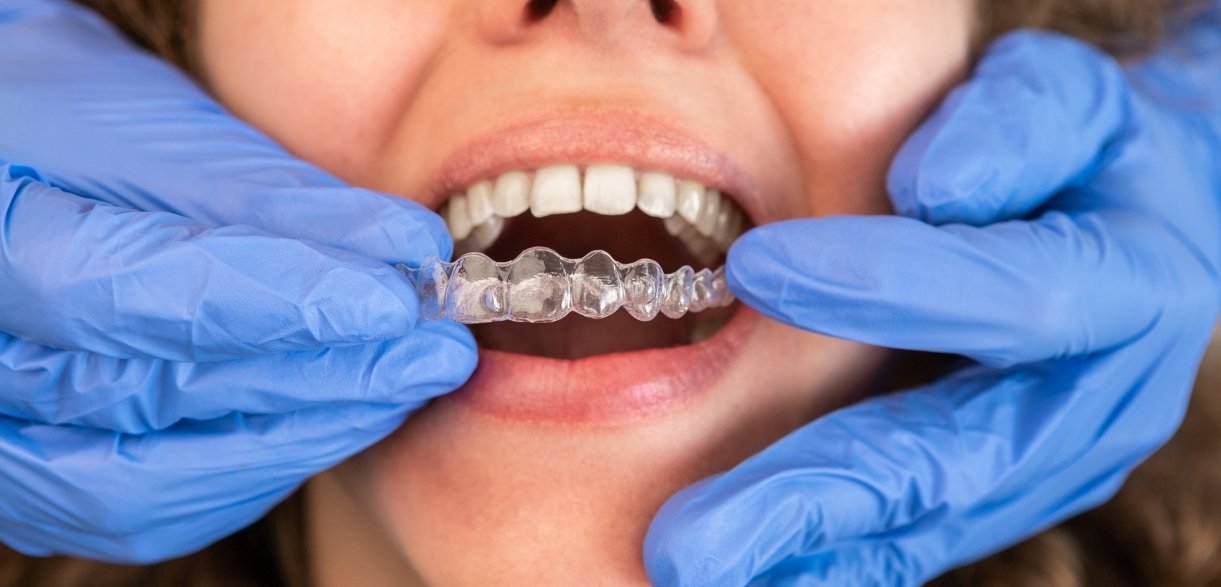Book An Appointment

If you’re considering Invisalign, you’re probably excited about straightening your teeth without the hassle of traditional braces. That’s the beauty of Invisalign—it’s transparent, discreet, and convenient. However, before you jump in, you must be fully prepared for what’s ahead. Knowing what to expect can help you make the best decisions and set realistic expectations.
Here’s a guide to everything you need to know before starting Invisalign treatment, from lifestyle changes to how it works.
What is Invisalign and How Does it Work?
Invisalign is a series of clear, removable aligners that gradually shift your teeth into place over time. Unlike traditional braces, which use metal brackets and wires, Invisalign aligners are nearly invisible, making them a popular choice for people who want a more discreet way to straighten their teeth.
Each set of aligners is custom-made to fit your teeth and worn for about 20-22 hours daily. Every one to two weeks, you’ll switch to a new set of aligners, with each set slightly shifting your teeth into the desired position.
Things to Consider Before Starting Invisalign Treatment
- Commitment to Wearing Aligners: Invisalign aligners must be worn for at least 20-22 hours daily to be effective. While the aligners are removable, consistently wearing them is key to getting the best results. If you have trouble sticking to this routine, consider it before starting.
- Regular Cleaning Routine Keeping your aligners and teeth clean is essential. You’ll need to brush your teeth after every meal before putting the aligners back in. Not doing so can lead to trapped food particles, which could cause tooth decay or bad breath. Plan on carrying a toothbrush wherever you go to maintain this routine.
- Treatment Length Varies The duration of Invisalign treatment in Charlotte varies from person to person. Some may complete their treatment in as little as six months, while others might take up to two years. Your orthodontist will assess your situation and give you an estimated timeline, but remember, this is just an estimate. Your commitment to wearing the aligners as instructed will impact how long the process takes.
- Mild Discomfort: When switching to a new set of aligners every week or two, you may experience some initial discomfort. This is because the aligners apply pressure to move your teeth. However, while it’s not painful for most people, you should expect some tightness or soreness, especially during the first few days of wearing a new set of aligners.
- No Eating or Drinking with Aligners: One of the major conveniences of Invisalign is that you can remove the aligners to eat. However, this also means that you’ll need to take them out whenever you eat or drink anything other than water. Otherwise, failing to remove them when eating could stain the aligners or even damage them. Although this might take some getting used to, especially if you’re accustomed to frequent snacking throughout the day, it becomes easier over time.
- Lifestyle Adjustments: Invisalign may require you to make a few lifestyle changes. For instance, if you love drinking coffee or tea, you might need to cut back or schedule your consumption. Since you can only drink water with your aligners in, you’ll need to remove them for other beverages, which means brushing your teeth before putting them back on. While this might seem inconvenient at first, it helps maintain good oral hygiene throughout the treatment.
- Speech Adjustments: In the beginning, you might notice a slight lisp while wearing the aligners. Fortunately, this is common and usually temporary. Your tongue needs time to adjust to the aligners, and the lisp should fade within a few days. To speed up this adjustment, you can practice speaking aloud at home if you’re concerned about it.
- Cost and Insurance Coverage: Invisalign can be an investment. While it tends to be more affordable than traditional braces in some cases, it’s still important to check what your insurance covers. Many insurance plans cover at least part of the cost, but it’s always a good idea to confirm with your provider before beginning treatment. This will help avoid any surprises later on.
- Frequent Checkups: Throughout the treatment, you’ll need to visit your orthodontist regularly to ensure that everything is progressing smoothly. Typically, these appointments occur every four to six weeks, though the frequency may vary depending on your progress. These checkups are crucial for monitoring how well the aligners are working and making any necessary adjustments.
- Post-Treatment Retention: After you complete your Invisalign treatment, wearing a retainer will likely be required to maintain your new smile. Without a retainer, your teeth could shift back to their original positions over time. Therefore, your orthodontist will recommend how often you should wear the retainer to ensure your teeth stay straight for the long term.
Preparing for Your Invisalign Journey
So, what should you do to get ready for Invisalign?
- Consult with Your Orthodontist: The first step is to have an in-depth consultation with an orthodontist familiar with Invisalign. They’ll assess your teeth and discuss whether you’re a good candidate for this treatment.
- Understand Your Timeline: First and foremost, having a general idea of how long the treatment will take can help you prepare both mentally and financially. This way, you’ll have realistic expectations from the start.
- Be Ready for Changes: Additionally, from brushing after meals to adjusting your speech, be prepared for some changes in your daily routine. The good news is that most people adapt quickly, and ultimately, the result is worth the effort.
- Stock Up on Essentials: Furthermore, always have a portable toothbrush, toothpaste, and floss on hand. You’ll need these throughout the day to keep your teeth clean.
Is Invisalign Right for You?
While Invisalign is an excellent option for many, it’s not always the best choice for everyone. For example, traditional braces may still be the better solution if you have more complex dental issues, such as severe misalignment or bite problems. The best way to know if Invisalign is right for you is to schedule a consultation with your orthodontist, who can guide you in the right direction.
Invisalign can be a fantastic way to treat crowded teeth, gap teeth, or open bite issues, but knowing what to expect before starting treatment is essential. Preparation is vital, from committing to wearing the aligners to adjusting your lifestyle. By understanding the ins and outs of the process, you can ensure a smoother Invisalign journey with satisfying results.
Are you ready to start your Invisalign journey in Charlotte? It could be the step toward the smile you’ve always wanted—make sure you know what’s involved before diving in!






